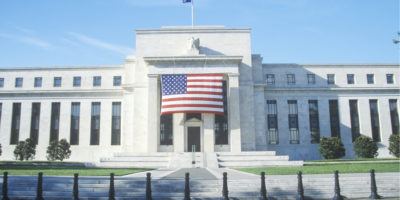Safe Banks Are Probably Not What You Want
In an iconic scene of the much-appreciated finance movie Margin Call, Paul Bettany’s character Will Emerson has an infamous one-minute rant about the impending financial collapse almost at the end of the movie:
Seth: “this is really gonna affect people […] real people”.
Will: “Jesus, Seth! Listen, if you really wanna do this with your life, you have to believe that you’re necessary – and you are! People wanna live like this in their cars and their big [effing] houses they can’t even pay for, then you’re necessary. The only reason that they all get to continue living like kings is because we’ve got our fingers on the scales in their favor. I take my hand off – then the whole world gets really [effing] fair, really [effing] quickly and nobody actually wants that. They say they do, but they don’t! They want what we have to give them, but they also want to – you know – play innocent and pretend they have no idea where it came from.”
After every financial crisis, banking collapse or even the latest money-laundering
schemes, serious calls are raised for creating safe and strictly regulated banks. And sure – if unstable and fragile banks are to blame for society-wide disaster, it makes sense to ensure their future stability. It is far from clear, however, that the run-up to the financial crisis that began in 2007 was caused by greedy, unrestrained bankers and that stricter capital and liquidity requirements would have done much to mitigate the fallout.
Why wouldn’t we want safe and stable banks? Like almost everything else in economics, benefits in one area comes with real costs in others. Making banks safer means you give up something else, in this case the cost and availability of credit.
Safety Is Easy
In fact, making banks safe and stable is surprisingly easy, but very few people actually want that, whether they know it or not. In the extreme, banks that hold nothing but cash or short-term, low-risk debt are therefore “risk-free,” but also contributes next to nothing to financially assist their clients and societies.
Most Western countries, following World War II, made their banks very safe by restricting what business they could do and forced them to hold large chunks of government debt so that footing the war bill became easier. Economists call this “financial repression”, where governments squeeze and regulate the financial sector so as to direct benefits to themselves (or for worthy, “underserved” groups of their choice). Many countries in the developing world too are intimately familiar with the societal effects of financial repression and the difficulty of obtaining bank credit under such regimes.
The overlooked consequences with which countries in various times and places have purchased stability and safety for their banks were, of course, expensive and inaccessible consumer financing for housing, investing or building up a business. The U.S. mid-20th century is a case in point for how invasive government regulation of the banking sector can improve safety at the expense of credit intermediation and returns for savers.
Lovely Liquidity
Today, America’s financial markets are flushed with Fed liquidity, while the central bank maintain a system that pay privileged banks above-market interest not to lend (IoERs). Financial regulation legislated by Congress, and financing programmes put in place by the Fed has made banks highly liquid and (comparatively) safe, but done little to assist the economy.
In the European Union, so-called “Zombie firms” – inefficient and uncompetitive firms that are kept alive by generous funding – are tightly connected to weak banks and have quickly become a real concern. Large sways of the private sector simply hum along, neither improving the economy nor alleviating Europe’s damagingly low productivity growth.
In other places, extensive capital regulations (even over and above Basel III rules), have increased mortgage rates and the cost of other customer lending. A recent report, for instance, concluded that Swedish home-owners have seen interest rates clock in at 50 basis points higher than otherwise would have been, solely attributed to capital regulations – and this for some of the safest and already most well-capitalized banks in the world. In the UK, various banking fines as well as heightened regulatory costs and capital regulations have long caused a serious headwind for British-based banks with rapid slowdown in consumer credit demand.
One way this works is through the relative costs of equity and wholesale debt or retail deposits. Since equity-owners face larger risks as well as volatility in their returns than (short-term) debt-holders, they require higher pay-offs which translates into higher funding costs for the bank. Having regulators on both sides of the Atlantic forcing banks to rely more on equity financing, they consequently push up the cost of the main input in banks’ production: funding.
Even if nominal (and real) interest rates have fallen secularly over the last few decades the heightened regulatory burden placed on the financial sector have somewhat counteracted that trend and consequently meant higher (than otherwise would have been) interest rates for consumers.
To hammer the point home, let’s make an analogy with a more well-understood example: the car industry. Regulating the fuel efficiency in cars has noticeably increased the costs of producing cars, since car manufacturers are now forced, incentivized, subsidized and regulated into using lighter materials and more advanced (and expensive) efficiency systems. When such regulations are binding, manufacturers are pushed away from using cheaper materials and inputs they otherwise would have used.
Banks operate by moving funds from lower-valued to higher-valued use, much likely every other business. The assembly line for banks make use of risk assessment models rather than fine-tuned welding machines, its input being other people’s amassed funds rather than processed steel. Aiming to increase the share of equity in financing banks’ lending similarly increase their cost of production, and ultimately the prices they charged consumers.
Indeed, ensuring that banks are safe is technically straightforward. But it’s not a free lunch. Financial history is filled with political policies that made banks very safe.
Just like Will Emerson in Margin Call, I’m not so sure that’s something you actually want – regardless of how much you complain of bankers’ excesses and collapsing banks.










